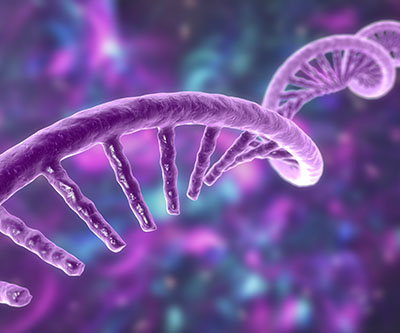
Stock photo of mRNA strand
Messenger RNA (mRNA) encodes the instructions for cells to make proteins in the process of translation. At any given time in a cell, there is a balance between the creation of these instructions (i.e., transcription) and their destruction (i.e., mRNA decay). Decay is an important part of the mRNA life cycle when specific proteins are no longer needed. Furthermore, overall translation may be reduced severely if a cell needs to streamline its energy use because nutrients are scarce.
A key method for initiating mRNA decay is to remove the specialized cap at the 5-prime end of mRNA transcripts. In yeast, this “decapping” process is usually done by an enzyme called Dcp2, which is activated by various factors. In a study from the Hinnebusch Lab, researchers showed in their yeast model that a portion of transcripts are targeted for degradation primarily by Dcp2 that is activated by factor Upf1, while degradation of the remaining transcripts requires activation of Dcp2 by four other known factors—Dhh1, Pat1, Edc3, and Scd6. Unexpectedly, they found that Dcp2 is also involved in regulating mRNA translation by pathways dependent and independent of decapping activator Dhh1. Dcp2 limits translation of many mRNAs encoding proteins that are not crucial for growth when cells have access to abundant, preferred nutrients, particularly those involved in mitochondrial respiration. These findings support an emerging model where regulators of mRNA turnover add another layer of post-transcriptional control of gene expression to direct appropriate responses to environmental changes.
NICHD co-authors of the paper include Anil Kumar Vijjamarri, Fan Zhang, Hongfang Qiu, Neha Gupta, and Swati Gaikwad.
Learn more about the Cell Regulation and Development Affinity Group: https://www.nichd.nih.gov/about/org/dir/affinity-groups/CRD
 BACK TO TOP
BACK TO TOP